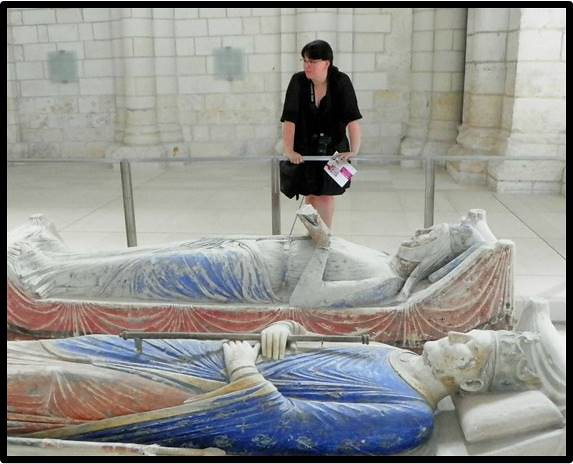About the Project

 "I appreciate your enthusiasm an
"I appreciate your enthusiasm anWhile I was considering how to redesign my ENGL 2400 World Literature I course in the summer of 2015, the news was unfortunately rife with the actions of ISIS, including the capture and destruction of Palmyra and the tragic murder of archaeologist Khaled al-Asaad. These events focused my course redesign attention on a specific idea: cultural heritage. As I began to research the history of the topic, I realized that it could hold the key to developing student interest in World Literature I. Beginning with readings about cultural heritage and recent/historical destruction, we could explore the essential question: if cultural heritage is frequently targeted for destruction, is vital to preserve, and has cost protectors’ lives, is what we are studying inherently significant? I found this approach to the class was successful. Students were far more interested in the course material, and there was little to no indication of not understanding the purpose or significance of the course material. In asking students to assess this approach, one commented, "Unit I helped me to understand why the preservation of world literature is so important. This in turn helped me to appreciate the material that we read in class. Starting with that unit allows students to reflect on their cultural values.”
After a year of framing this course in such a way, I reflected that this approach has a close relationship with my other passion: photography. I developed an interest in photography about ten years ago when I began taking photos of American Civil War battlefield sites. For several years, I entered contests sponsored by the Civil War Trust and was honored to win multiple awards, particularly in the category of Preservation Threats. From this beginning, my photography has expanded into other subjects, but particularly cultural heritage sites both in the United States and in other countries. In other countries, my focus has been on subjects related to my professional field, medieval studies, but also those related to other subjects I teach, which include ancient and classical studies. The connection between my photography interests and my professional and teaching interests is what motivates this project.
At Fitchburg State University, our general education curriculum includes a “Global Diversity” requirement, which is intended to “provide a context for understanding the political, economic, cultural, and historical events or experiences of other countries, including those that are non-Western.”[1] One of the issues we face teaching at a regional university is that our students do not often have experiences outside of New England, and we attempt whenever possible to encourage our students to see themselves in a more global context.[2] This project is a new way both to encourage students to make the connection between the history and experiences of their local culture with those outside of New England as well as to encourage this kind of appreciation and perception in local communities and hopefully beyond to non-local communities. Indeed, the history and culture of nearby Boston frequently overshadows the local history of New England outside of the city, and this project seeks to place emphasis on the less well-known cultural heritage of the area.
This photo project has two main emphases: paralleling iconic as well as locally-significant European and New England cultural heritage sites and paralleling ancient/medieval cultural heritage sites to American history cultural heritage sites. Example categories of these photographic pairings include: local legends (for example, Robin Hood and Johnny Appleseed), universities, battlefields, cathedrals/churches, other religious sites, government buildings, cemeteries/tombs, literary sites, statues/monuments, stadiums, etc.
Engaging in this project has allowed me to develop as a photographer, a teacher, and a scholar, combining three of my greatest passions. Bringing my photography into the classroom context allows me to speak to my students in different ways, demonstrating to them what I see as a trained expert when I visit cultural heritage sites and how essential I think cultural heritage and history of all kinds are to humanity.
Kisha G. Tracy, Project Leader
Associate Professor, English Studies, Fitchburg State University
Coordinator, Center for Teaching and Learning, Fitchburg State University
[1] The general education curriculum overview can be found here: http://www.fitchburgstate.edu/uploads/files/LAS/LiberalArtsandSciencesCoreOutline.pdf
[2] See the University Mission and Vision: http://www.fitchburgstate.edu/about/university-mission-vision-and-values/
